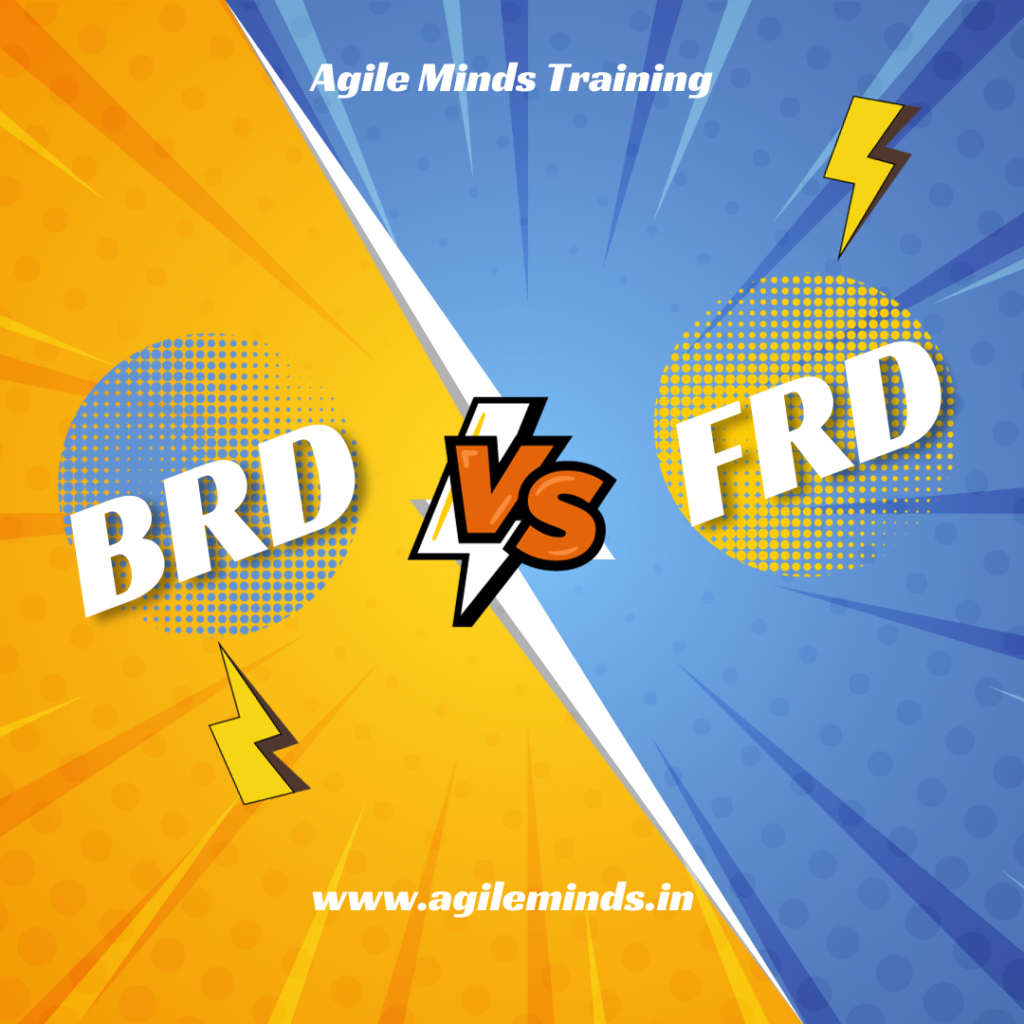In the world of project management and development, two crucial documents play a pivotal role in turning ideas into reality: the Business Requirement Document (BRD) and the Functional Requirement Document (FRD). These documents may sound technical, but fear not; we’ll break down the differences between them using a simple, relatable example – building a motorcycle. Lets understand BRD vs. FRD
BRD (Business Requirement Document): The Blueprint

Imagine you have a dream of owning a motorcycle that can get you to your destination quickly and efficiently. You share this idea with a group of designers and engineers. This initial concept is what we call the BRD, which stands for Business Requirement Document, or Business Requirement Specification Document (BRS).
The BRD is like the blueprint for your motorcycle. It’s where you outline your high-level requirements, such as the need for a frame, handle, seat, carriage, pedal, chain system, and stands (center and side stands). These requirements represent your vision but don’t delve into the nitty-gritty details.
FRD (Functional Requirement Document): Turning Vision into Reality
Now, let’s move on to the FRD, which stands for Functional Requirement Document or Functional Requirement Specification Document (FRS). Think of the FRD as the instruction manual for assembling and making your motorcycle work according to your vision.
In the FRD, we answer specific questions and provide detailed information:
How does the motorcycle look? This section describes the design and appearance.
What parts are included, and how are they assembled? Here, you’ll find step-by-step instructions for assembling the motorcycle.
How can the motorcycle be used? This covers its functionalities, like how the engine works, how to handle turns, brake efficiently, and operate the lights.
What is the motorcycle’s performance? This section outlines aspects like speed, accuracy, and fuel efficiency.
Used cases and process flows: We examine different scenarios, like starting the engine, riding through traffic, and parking.
Assumptions and limitations: This part clarifies any assumptions made during the design and outlines the bike’s limitations, such as maximum weight capacity or speed.
“To put it simply, the BRD is your dream motorcycle in its most basic form, while the FRD is the guidebook that explains how to build it, how it works, and what it can and cannot do.”
Breaking Down BRD into FRD
Now, you might wonder if the BRD can be considered as a single requirement or if it should be broken into multiple requirements. The answer is yes; it should be broken down into multiple requirements.
For example, your BRD requirement for a frame that fits the handle, seat, carriage, pedal, chain system, and stands can be dissected further in the FRD. The FRD will elaborate on the frame’s features, functionalities, performance, assumptions, and limitations.
In the end, your BRD sets the goal, while your FRD is the roadmap to reach that goal, ensuring that every detail of your motorcycle project is clear and well-defined.
In summary, the difference between BRD and FRD is akin to dreaming about a motorcycle (BRD) and then meticulously planning, designing, and building it (FRD). It’s a crucial distinction in the world of project management, whether you’re developing software, hardware, or even a physical machine like a motorcycle.
During my workshop i explain this concept very fluidly so that students never forget, join here to become a successful business anlayst
To read this article on LinkedIn click here
